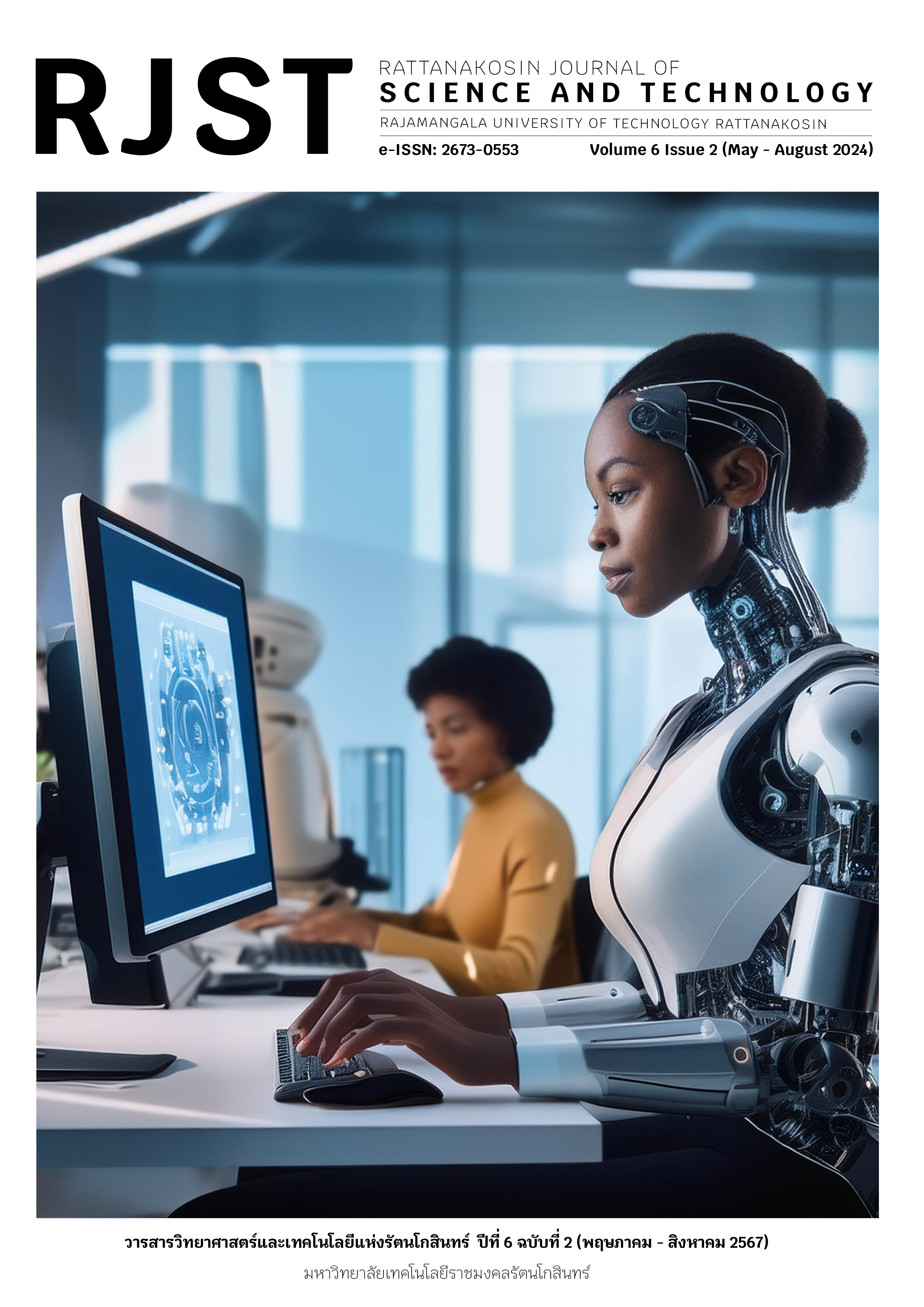The Development of Knowledge Sharing Platform for Lifelong Learning Community Case Study of Sam Khok District, Pathum Thani Province
Main Article Content
Abstract
The purpose of this research was to collect knowledge and develop community learning resources to promote lifelong learning characteristics in the people by using digital technology to create a knowledge sharing community platform that consists of media contents and digital learning resources for lifelong learning in Sam Khok district, Pathum Thani province. The samples used in the experiment were divided into 3 groups: teachers, students, and local people in Sam Khok, Pathum Thani, for a total of 150 people. Data were analyzed by frequency, percentage, mean, standard deviation, and t-test dependent. It was found that the community learning resources consisted of three components: the people, the place, and the tradition and culture. The results of the analysis of the needs for the development of the community's learning resources found that most people (86 percent) agreed that the website was the first preferred channel for presenting learning resources. The researcher therefore developed a learning platform as a web application on a domain called “samkhok.org”. Web application performance assessment results from the experts found that the overall web application performance was appropriate at a high level (=4.33, S.D.=0.57), and satisfaction assessment results from a sample group of 150 people found that the overall satisfaction of the web application was at a high level (=4.48, S.D.=0.56). In summary, the follow-up results of knowledge transfer from the sample group found that most of them applied the knowledge acquired to develop learning materials for teaching and learning and school activity materials, including transferring knowledge to personnel in the organization. In the overview part of this follow-up Most of the project participants benefited from being able to apply their knowledge to simple technologies such as smartphones and computers to develop learning materials and write articles on the platform, which can be practically used in both work and everyday life on social media.
Article Details

This work is licensed under a Creative Commons Attribution-NonCommercial-NoDerivatives 4.0 International License.
The content within the published articles, including images and tables, is copyrighted by Rajamangala University of Technology Rattanakosin. Any use of the article's content, text, ideas, images, or tables for commercial purposes in various formats requires permission from the journal's editorial board.
Rajamangala University of Technology Rattanakosin permits the use and dissemination of article files under the condition that proper attribution to the journal is provided and the content is not used for commercial purposes.
The opinions and views expressed in the articles are solely those of the respective authors and are not associated with Rajamangala University of Technology Rattanakosin or other faculty members in the university. The authors bear full responsibility for the content of their articles, including any errors, and are responsible for the content and editorial review. The editorial board is not responsible for the content or views expressed in the articles.
References
สัจธรรม พรทวีกุล. (2561). การสังเคราะห์งานวิจัยที่เกี่ยวกับการพัฒนาสังคมแห่งการเรียนรู้เพื่อการพัฒนาอย่างยั่งยืน. วารสารมหาวิทยาลัยนครพนม, 8(3), 109-117.
Marquardt M. J. (1996). Building the learning organization: A systems approach to quantum improvement and global success. New York: McGraw-Hill.
พระมหาเทวินทร์ วรปญฺโญชิณบุตร. (2564). สังคมแห่งการเรียนรู้ตลอดชีวิตในสถาบันอุดมศึกษา. วารสาร มจร พุทธโสธรปริทรรศน์, 1(2), 125-133.
สุมาลี สังข์ศรี. (2555). การเรียนรู้ตลอดชีวิตสำหรับประเทศไทย (พิมพ์ครั้งที่ 2). นนทบุรี: สำนักพิมพ์มหาวิทยาลัยสุโขทัยธรรมาธิราช.
วิรุฬห์ นิลโมจน์. (2558). ภูมิปัญญาท้องถิ่นและแหล่งวิทยาการชุมชนเพื่อการศึกษาตลอดชีวิต. ในเอกสารการสอนชุดวิชาประสบการณ์วิชาชีพการศึกษานอกระบบ (หน่วยที่ 9, หน้า 9-1 ถึง 9-63, ปรับปรุงครั้งที่ 1). นนทบุรี: มหาวิทยาลัยสุโขทัยธรรมาธิราช.
ณัฏฐลักษณ์ ธาระวานิช. (2557). แหล่งการเรียนรู้ในศตวรรษที่ 21 เพื่อส่งเสริมการเรียนรู้ตลอดชีวิตของประชาชน. กรุงเทพฯ: สำนักพิมพ์แห่งจุฬาลงกรณ์มหาวิทยาลัย.
วรพงศ์ ผูกภู่. (2565). องค์ประกอบการพัฒนาแหล่งการเรียนรู้. สืบค้นจาก https://www.randdcreation.com/content/2992/องค์ประกอบการพัฒนาแหล่งเรียนรู้
เหมือนพิมพ์ สุวรรณกาศ. (2558). มรดกทางวัฒนธรรม: การสร้างตัวตนคนมอญสามโคก จังหวัดปทุมธานี. (รายงานผลการวิจัย). ปทุมธานี: มหาวิทยาลัยธรรมศาสตร์.
เขมณัฏฐ์ มิ่งศิริธรรม. (2553). การพัฒนาฐานข้อมูลแหล่งการเรียนรู้จังหวัดสมุทรสงคราม (รายงานผลการวิจัย). กรุงเทพฯ: มหาวิทยาลัยราชภัฏสวนสุนันทา.
ธนัทณัฏฐ์ ฉัตรภัครัตน์ และคณะ. (2561). การพัฒนารูปแบบแหล่งการเรียนรู้ชุมชนอัจฉริยะในศตวรรษที่ 21 เพื่อส่งเสริมคุณลักษณะการเรียนรู้ตลอดชีวิตของประชาชน (รายงานผลการวิจัย). กรุงเทพฯ: สำนักงานคณะกรรมการวิจัยแห่งชาติ.
Adel A. & Abdullah B. (2015). A Comparison Between Three SDLC Models Waterfall Model, Spiral Model, and Incremental/Iterative Model. International Journal of Computer Science, 12(1), 106–111.
วิทวัฒน์ พัฒนา. (2553). การวิเคราะห์และออกแบบระบบ. กรุงเทพฯ: ซีเอ็ดยูเคชั่น.
อุไร ทองหัวไผ่. (2558). การทดสอบซอฟต์แวร์. วารสารเกษมบัณฑิต. 16(2), 140-154.
Murray J. (2013). Likert data: what to use, parametric or non-parametric?. International Journal of Business and Social Science, 4(11), 258-264.
สำนักงานพัฒนาธุรกรรมทางอิเล็กทรอนิกส์ กระทรวงดิจิทัลเพื่อเศรษฐกิจและสังคม. (2565). รายงานผลการสํารวจพฤติกรรมผู้ใช้อินเทอร์เน็ตในประเทศไทยปี 2565. สืบค้นจาก https://www.etda.or.th/getattachment/78750426-4a58-4c3685d3d1c11c3db1f3/IUB-65-Final.pdf.aspx
พนิดา พานิชกุล. (2555). การสื่อสารระหว่างมนุษย์กับคอมพิวเตอร์. มหาสารคาม: มหาวิทยาลัยราชภัฏมหาสารคาม.
ศศิพันธ์ นิตยะประภา. (2558). การใช้งานได้ของเว็บไซต์. วารสารเทคโนโลยีสารสนเทศ, 11(2), 70-86.
นงเยาว์ สอนจะโปะ และสิทธิพงษ์ พุทธวงษ์. (2562). การออกแบบและพัฒนาเว็บไซตแนะนําสถานที่ท่องเที่ยวในจังหวัดชลบุรีโดยใช้หลักการ Responsive web design. วารสารวิชาการศรีปทุม ชลบุรี, 15(4), 88-99.

